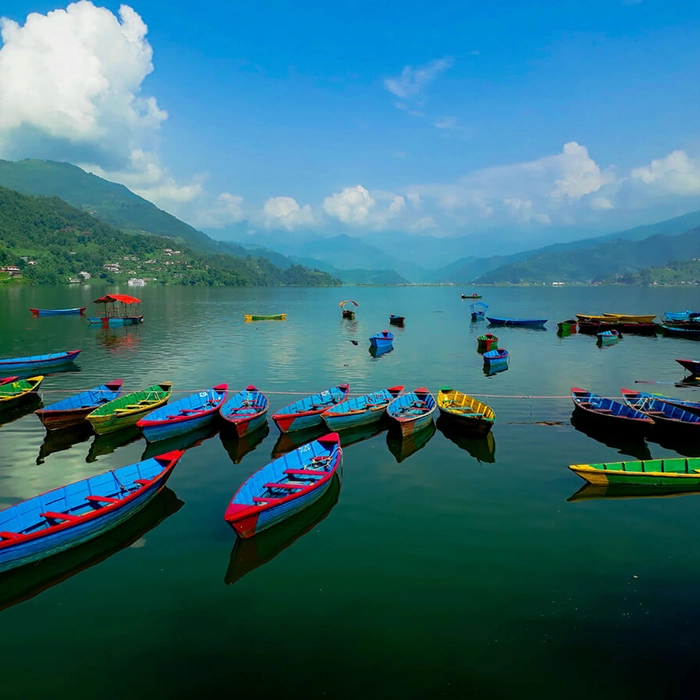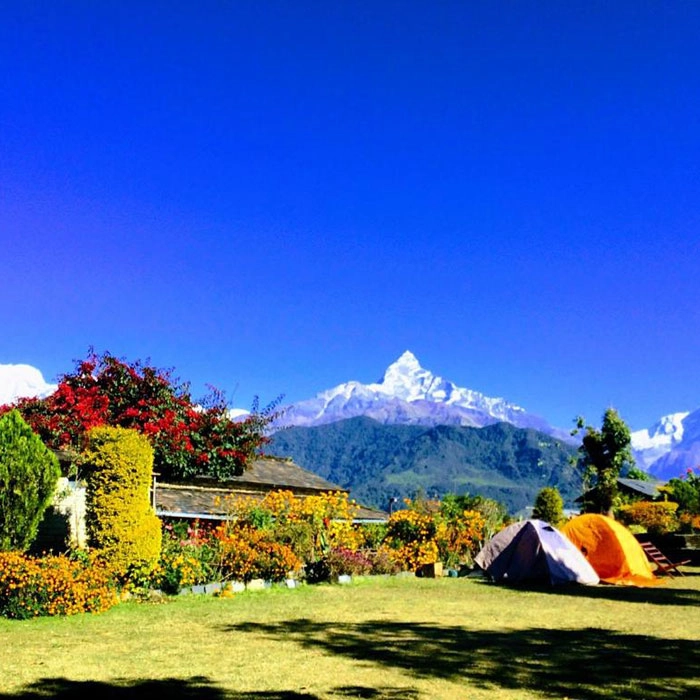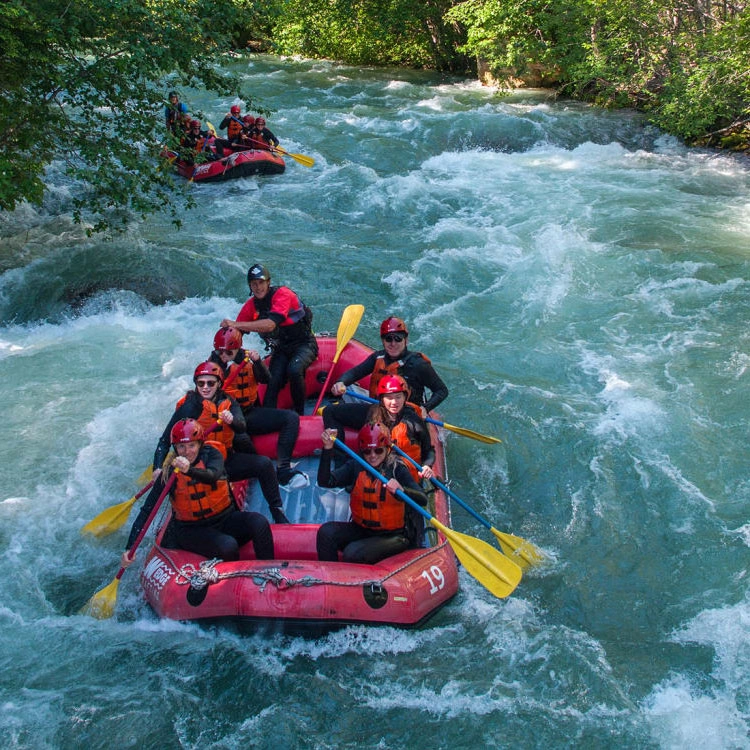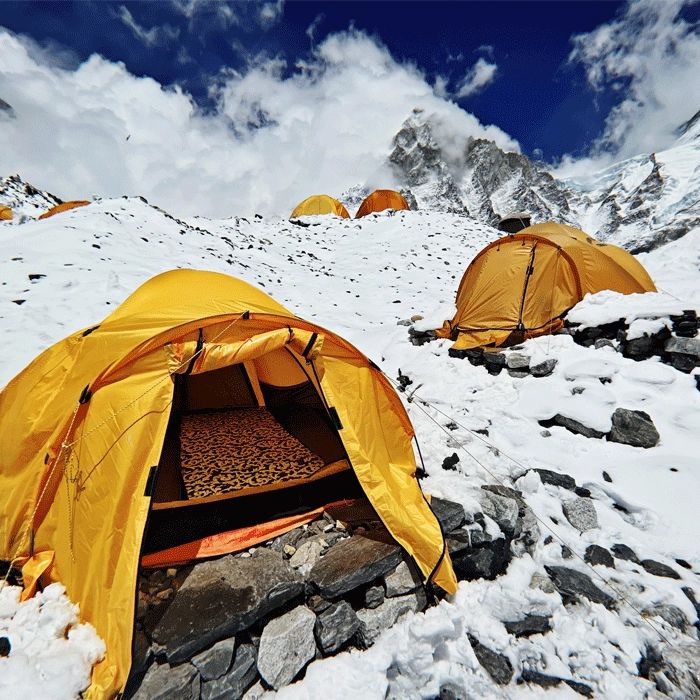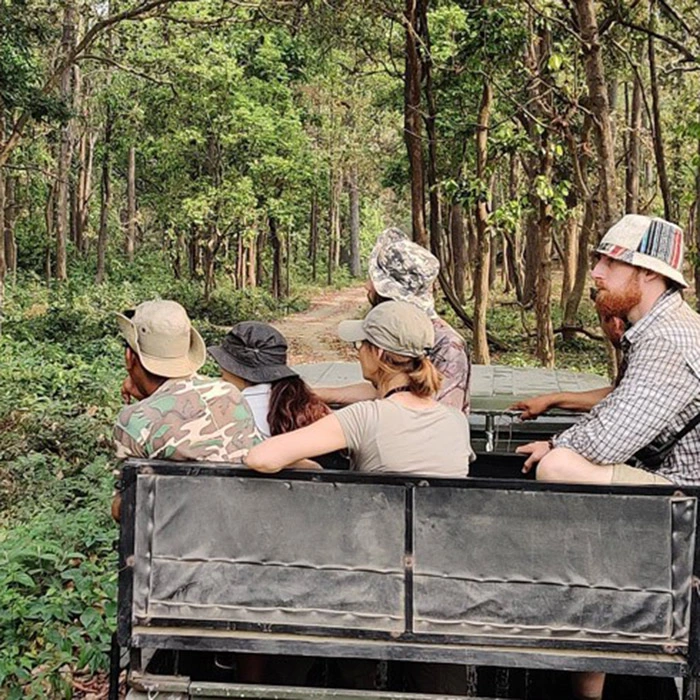TEMPLES TO PEAKS NEPAL TOUR
US$1,500.00
/pp
-
5 Days
-
Nepal Tours
-
Spring/Autumn
-
Tour
-
2,195 Meters
-
Easy
-
Bus / Plane
-
01-16 People
-
JH#218-L
 Overviews
Overviews
Discover the rich tapestry of Nepal’s culture, history, and natural beauty on the Temples to Peaks Nepal Tour, a captivating 5-day journey through some of the most iconic destinations in the Kathmandu Valley and Pokhara. Your adventure begins in Kathmandu (1,400 m), where you'll explore major UNESCO World Heritage Sites including the majestic Kathmandu Durbar Square, Pashupatinath Temple, Boudhanath Stupa, and Swayambhunath Stupa. These sites showcase Nepal’s spiritual heritage, intricate architecture, and vibrant religious traditions, offering deep cultural insights.
Expand your cultural immersion by visiting the ancient cities of Patan and Bhaktapur, each boasting their own UNESCO-listed Durbar Squares. Patan, also known as Lalitpur, is distinguished for its exquisite Newari architecture, remarkable temples, and a flourishing community of skilled artisans. Wander its intricately carved courtyards and vibrant markets to experience living heritage and traditional craftsmanship. In Bhaktapur, you'll be enchanted by its medieval charm, well-preserved palaces, and unique landmarks such as the 55-Window Palace and the Golden Gate, all reflecting centuries of artistic excellence.
From the cultural richness of the valley, you'll head to Nagarkot (2,195 m), a tranquil hilltop retreat known for panoramic views of the Himalayas. Here, catch breathtaking sunrises and sunsets that paint the snow-capped peaks in mesmerizing colors—an ideal escape for photographers and nature lovers seeking serenity.
Your journey continues to Pokhara (822 m), a city celebrated for its natural beauty and outdoor adventures. Explore the sacred Bindhyabasini Temple, an important Hindu site dedicated to goddess Durga. Explore Pumdikot, a serene hilltop known for its expansive views of the Himalayas and home to an impressive large statue of Lord Shiva, offering a tranquil setting ideal for contemplation and photography. Discover the iconic World Peace Stupa (Shanti Stupa), perched atop a hill, offering sweeping views of Pokhara, Phewa Lake, and the surrounding mountain ranges — a beacon of peace and spirituality.
Experience the power of nature at David's Fall, where water dramatically plunges into an underground tunnel. Nearby, the Tibetan Refugee Camp offers an opportunity to connect with Tibetan culture through crafts, cuisine, and community stories. Witness the spectacular sunrise at Sarangkot (1,600 m), a hilltop famous for its panoramic vistas of the Annapurna range and Pokhara city. Conclude your Pokhara visit with a serene boat excursion on Phewa Lake to Tal Barahi Temple, an island sanctuary enveloped by the lake’s reflective waters, offering a tranquil and spiritual retreat.
This comprehensive itinerary perfectly blends the UNESCO heritage treasures of Kathmandu, Patan, and Bhaktapur, the natural beauty and tranquility of Nagarkot, and Pokhara's cultural landmarks and scenic wonders. The Temples to Peaks Nepal Tour offers an unforgettable journey through Nepal's diverse landscapes and spiritual heartlands, leaving you with lasting memories of this Himalayan gem.
 Itinerary (Plan)
Itinerary (Plan)
Upon arrival in Kathmandu, Nepal’s culturally esteemed capital, you will be graciously welcomed with traditional marigold garlands and escorted to your hotel to rest and acclimatise. Your journey begins gently in this bustling hill station, giving you the perfect opportunity to settle in and prepare for the exciting days ahead exploring the Eastern Kathmandu Valley.
Your first destination is the ancient city of Bhaktapur, a UNESCO World Heritage Site celebrated for its exceptional preservation of medieval architecture and Newari culture. Known as the "City of Devotees," Bhaktapur offers a timeless glimpse into Nepal’s artistic and cultural heritage. As you stroll through its labyrinth of cobbled streets and alleys, you will be captivated by intricately carved wooden windows, ornate brickwork, and centuries-old temples such as the 55-window palace, Nyatapola Temple, and Vatsala Temple. The city’s squares bustle with local artisans crafting pottery, weaving fabrics, and creating traditional masks, giving you a rich sensory experience of authentic Nepalese craftsmanship and daily life.
After immersing yourself in Bhaktapur’s cultural treasures, you will be driven to Nagarkot, a tranquil hill station located approximately 12 kilometers from Bhaktapur. Famous for offering one of the most breathtaking panoramic views of the Himalayan mountain range, Nagarkot is the perfect retreat from the city’s hustle and bustle. Here, as the day draws to a close, you can relax and prepare to witness a truly magical sunset. As the sun sets beyond the majestic Himalayan peaks in Nagarkot, the sky is painted with a breathtaking palette of fiery oranges, soft pinks, and deep purples. The glowing light reflects on the snow-capped mountains, including the majestic Everest and the Annapurna range on clear days, creating an unforgettable spectacle.
The peaceful atmosphere of Nagarkot invites quiet reflection or photography, allowing you to fully absorb Nepal’s natural beauty and tranquility. This unforgettable sunset experience not only highlights the grandeur of the Himalayas but also provides a serene contrast to your city explorations, setting the perfect tone for the adventures that lie ahead.
Begin your day with an early wake-up to experience the magical sunrise at Nagarkot, a moment that truly captures the soul of Nepal’s natural beauty. As dawn breaks, the sky transforms into a magnificent palette of pinks, oranges, and golds, casting a warm glow over the snow-capped Himalayan peaks. The peaceful atmosphere here, high above the Kathmandu Valley, allows you to soak in panoramic views stretching all the way from Langtang to Everest on clear days. This serene spectacle, accompanied by the crisp mountain air and quiet surroundings, offers an unforgettable start to your day — perfect for photographers and nature lovers eager to witness one of the world’s most breathtaking sunrises.
After a wholesome breakfast, you will travel to Patan (Lalitpur), a city steeped in history and renowned for its artistic and architectural treasures. Patan is one of the oldest settlements in the Kathmandu Valley, famous for its extraordinary Durbar Square, which serves as the cultural heart of the city. The square is adorned with intricately carved wooden temples, elegant palaces, and vibrant courtyards, many dating back several centuries. Highlights of the tour include a visit to Krishna Mandir, a stunning stone temple dedicated to Lord Krishna, celebrated for its intricate design and spiritual significance. Just nearby, the Hiranya Varna Mahavihar—commonly called the Golden Temple—enchants visitors with its stunning Buddhist art and exceptional architecture.
As you explore the labyrinthine alleys of Patan, you will discover artisan workshops where traditional metalworkers, woodcarvers, and stone sculptors continue age-old crafts passed down through generations. The city’s lively markets provide a colorful backdrop filled with handmade goods, spices, and textiles, giving you a genuine taste of local life. Patan’s harmonious blend of Hindu and Buddhist influences is evident in its festivals, rituals, and everyday life, making it a fascinating place for cultural immersion.
After your enriching visit to Patan, you will be transferred to Kathmandu airport for your scenic flight to Pokhara — a tranquil city nestled beside the shimmering Phewa Lake and framed by towering Himalayan Mountains. Upon arrival, you’ll be escorted to your hotel for check-in and some well-earned rest. Upon arrival in Pokhara, you will have the remainder of the day at leisure to relax. For a tranquil experience, consider taking a peaceful boat ride on Phewa Lake, where the calm waters beautifully mirror the majestic Annapurna mountain range. Alternatively, enjoy a leisurely stroll along Pokhara’s lively Lakeside promenade, which is filled with charming cafes, boutique shops, and a warm, welcoming local atmosphere. This day offers a seamless blend of cultural discovery and restful enjoyment, setting the stage for the exciting adventures that lie ahead.
Start your day early with an unforgettable sunrise at Sarangkot, a famous hilltop offering breathtaking panoramic views of the majestic Annapurna mountain range and the picturesque city of Pokhara nestled below. Witnessing the first golden rays illuminate the snow-capped peaks is a magical experience cherished by nature lovers and photographers alike. On your way back to the hotel, visit the historic Bindhyabasini Temple, one of Pokhara's oldest and most revered Hindu shrines dedicated to goddess Durga, offering insight into the vibrant local spiritual culture.
After a hearty breakfast, embark on an adventure-filled sightseeing tour of Pokhara's top attractions. Begin with Pumdikot, a tranquil hilltop known for its sweeping Himalayan foothill landscapes and the impressive large Shiva statue — a perfect spot for reflection and stunning photographs. Next, visit the iconic World Peace Stupa (Shanti Stupa), a serene Buddhist monument perched high above the city, offering panoramic views of Pokhara, Phewa Lake, and the surrounding mountains — a true symbol of peace and harmony.
Continue your journey to David's fall, a spectacular natural waterfall famous for its powerful cascade that mysteriously disappears into an underground tunnel. Nearby, visit the Tibetan Refugee Camp, where you can engage with Tibetan culture, explore traditional crafts, and savor authentic cuisine while supporting the resilient refugee community.
Conclude your sightseeing with a visit to Gupteshwore Mahadev Cave, a sacred cave temple dedicated to Lord Shiva, renowned for its fascinating rock formations and deep spiritual significance.
After a day filled with natural beauty, cultural exploration, and adventure, board your evening flight back to Kathmandu to relax and prepare for the exciting days ahead in your Nepal journey.
Begin your day with a relaxed morning, perfect for enjoying a peaceful breakfast or quiet reflection before your guided tour starts at 10 AM. For those seeking an extraordinary start, opt for the optional Everest Mountain Flight at 6 AM — a breathtaking one-hour aerial journey that offers panoramic views of the Himalayan giants. Soaring east from Kathmandu, you'll witness Mount Everest, Lhotse, Makalu, and other snow-covered peaks in their morning glory — an unforgettable bucket-list experience for adventurers and photographers.
Later, dive into the spiritual and cultural essence of Kathmandu as you explore four of its most iconic and sacred landmarks. First, visit Pashupatinath Temple, the holiest Hindu shrine in Nepal, situated along the sacred Bagmati River. This UNESCO World Heritage Site is a powerful blend of devotion, architecture, and rituals — with golden pagoda-style roofs, elaborately carved woodwork, and open-air cremation ghats that reflect centuries-old Hindu traditions.
Next, discover the serenity of Boudhanath Stupa, one of the largest spherical stupas in the world. Encircled by spinning prayer wheels and fluttering prayer flags, this sacred Tibetan Buddhist site pulses with spiritual energy. The watchful eyes of the Buddha gaze from its gilded tower as monks chant mantras and devotees perform their ritual kora walks. The surrounding lanes are alive with Tibetan culture, monasteries, and artisan shops that preserve ancient Himalayan traditions.
Continue your journey to the hillside sanctuary of Swayambhunath, affectionately known as the Monkey Temple. Climb the 365 stone steps flanked by curious monkeys and prayer flags, arriving at a hilltop stupa that offers one of the best panoramic views of the Kathmandu Valley. This sacred complex blends Buddhist and Hindu iconography, with spinning prayer wheels, stone shrines, and the golden dome of enlightenment shimmering in the sun.
Conclude your spiritual tour at Kathmandu Durbar Square, a living museum of royal history, artistry, and daily life. Once the seat of Malla kings, the square is adorned with intricately carved temples, the Hanuman Dhoka Palace, and the Taleju Bhawani Temple. Don't miss the chance to see the Kumari Ghar, home to the Living Goddess — a rare and revered tradition unique to Nepal.
By the end of this immersive day, you'll have experienced Kathmandu's soul — its sacred spaces, royal legacy, and timeless cultural traditions. From Everest's mighty peaks to the heart of ancient kingdoms, today's journey offers a profound window into Nepal's spiritual and historical identity.
As your unforgettable journey through Nepal comes to a close, spend your final morning in Kathmandu at your leisure. You may choose to take a peaceful stroll through the vibrant streets, visit local markets for last-minute souvenirs, or simply relax and reflect on the incredible memories you've created—from majestic Himalayan sunrises to timeless temples and warm cultural encounters.
For those who haven't yet experienced the awe-inspiring Everest Mountain Flight, this can be arranged on this final morning (subject to weather and availability), offering a last glimpse of Nepal's iconic peaks from the skies.
At the appropriate time, a representative from Jagadamba Holidays will arrive at your hotel to escort you to Tribhuvan International Airport, typically 3.5 hours before your scheduled departure. As a token of farewell and good wishes, you'll be offered a traditional Khata scarf, symbolizing a safe journey and heartfelt blessings.
With bags brimming with souvenirs and hearts enriched by memories, depart Kathmandu filled with gratitude, inspiration, and the hope of returning someday to the majestic land of the Himalayas.
Quotation 2025
| Group Size (Pax) |
1 - 1 |
2 - 2 |
3 - 4 |
5 - 8 |
9 - 12 |
13 - 16 |
17 - 20 |
21 - 24 |
25 - 32 |
| Cost Per Person |
$1,539 |
$1,509 |
$1,479 |
$1,449 |
$1,419 |
$1,389 |
$1,359 |
$1,329 |
$1,299 |
 Cost Include
Cost Include
- All transfers within Nepal are included as per itinerary
- Any domestic flight of Nepal as per trekking itinerary
- Trekking accommodation (hotel, lodge and/or tent) as per itinerary
- Small shared room with shared bathroom during trek in Nepal
- In Kathmandu and/or Pokhara: Stay at ***Hotel with breakfast
- Luggage for porters during the trek (12.5 kg/person)
- 3 meals (Breakfast, Lunch and Dinner) during the trek
- Unlimited tea or coffee for breakfast during the trek
- An English speaking guide (trekking/tour) as per Itinerary
- Travel insurance for trekking staff (guides and porters)
- All expenses of trekking staff(s) during trekking
- Includes all conservation, national park, trekking, and climbing permits
- Sightseeing / Wildlife tours if included in the itinerary
- Farewell dinner in Kathmandu before returning home
 Cost Exclude
Cost Exclude
- Single room/single tent surcharge (on request)
- Round trip/one way international flight ticket to Nepal.
- Tourist visa for Nepal (30-50 $, depending on length of stay)
- Personal Insurance (covers: Trip/flight cancellation, helicopter rescue)
- Meals (lunch, dinner) at hotels in Kathmandu, Pokhara and other cities
- Drinks (soft, hot or mineral/boiled water) during the lodge trek
- Any personal trekking and/climbing equipment for trekking in Nepal
- Hotel expenses in case of early return from trekking for any reason
- Costs due to flight cancellations & extra porters/horses during the trek
- Additional costs incurred due to any reason beyond Jagdamba’s control
- More evidence about pandemics like COVID-19 if needed in the future.
- Personal expenses during the trek (phone, wifi, shower, charging etc.)
- Other costs and things that are not mentioned in the service inclusion
- Gratuity for trekking staff (recommended: 9€ /10$ per traveler per day)
|



 Overviews
Overviews
 Trip Overview
Trip Overview
 Travel Itinerary
Travel Itinerary
 Cost Include
Cost Include
 Cost Exclude
Cost Exclude
 Fixed Departure
Fixed Departure
 Route Map
Route Map

 Freqeuntly Asked Questions
Freqeuntly Asked Questions
 Reviews And Rating
Reviews And Rating
